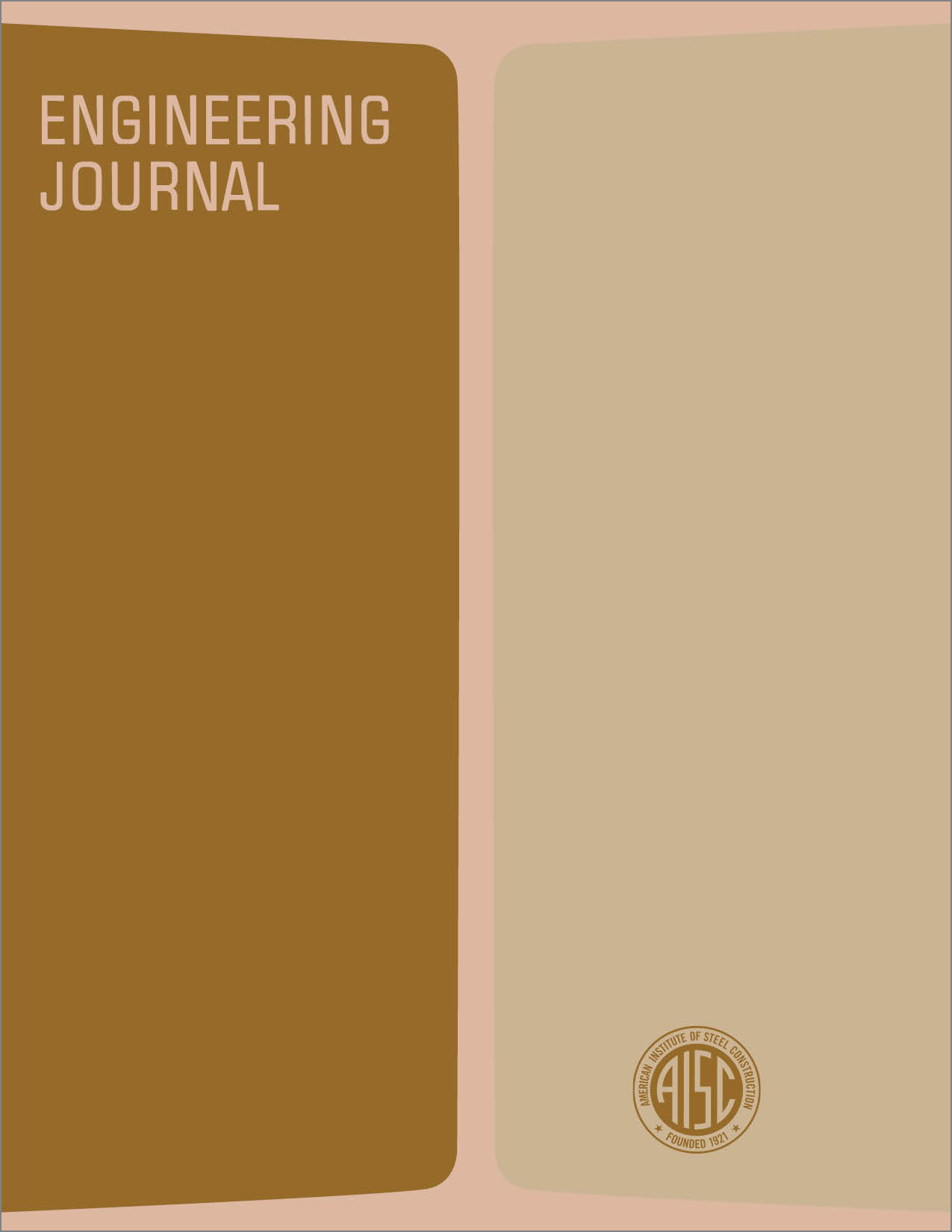Proposed Working Stresses for Fillet Welds in Building Construction
DOI:
https://doi.org/10.62913/engj.v6i1.115Abstract
Despite the advances in the art of welding which have taken place in the past 40 years and a greater emphasis on quality control today, the working stress provision for fillet welds, with only minor modifications, is the same now as when the AWS Code for Fusion Welding and Gas Cutting in Building Construction was first published in 1928. At that time a shear stress of 11.3 ksi was permitted on the throat of fillet welds. Later, when covered electrodes of specified strength were required by the Code, tests reported by Godfrey and Mount indicated a 20 percent increase in the strength of fillet welds made with these electrodes. The allowable stress value was raised to 13.6 ksi. This stress is that currently permitted in building construction for fillet welds made with E60XX electrodes on A36 steel. Obviously, a system of working stresses for fillet welds dependent upon a given spread between electrode and base metal mechanical properties, would be too involved for everyday use.

